We are excited to welcome Tamara Weiss and Amanda Benchley, who are the authors of Vineyard Folk: Creative People and Places of Martha’s Vineyard to The Style That Binds Us podcast. I met Tamara and Amanda when I went to their book talk at The Corner Bookstore and immediately knew we should have them on the podcast.
I have so enjoyed reading, devouring, and soaking in this book! We can’t wait to hear all about their book that celebrates the creatives who call Martha’s Vineyard home.
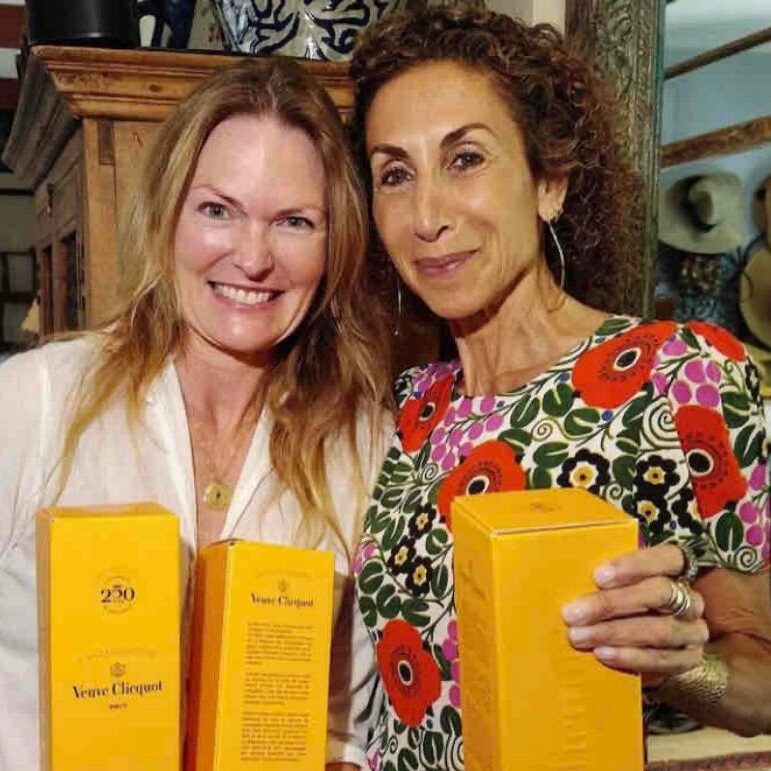
Tamara Weiss and Amanda Benchley, authors of the Vineyard Folk: Creative People and Places of Martha’s Vineyard
Thank you both so much for being here.
Amanda: Thank you so much for having us, and thank you for coming that night to the Corner Bookstore where you thought the book looked interesting and decided to come by.
That was lucky for us that we got to be here today. The seed of the idea I came up with, two summers ago, Tamara remembers that. We were at the Ruel Gallery, which is a couple in the book, Colin Rule and Nettie Kent.
I turned to her and said something like, “We should do a book about all these wonderful people on the island, this very special community.” It grew from there from that original discussion that night.
We’re thrilled that you did because it’s magnificent.
It is, and I wish that we had known the two of you when we came last year to Martha’s Vineyard, so we’re going to have to come back. Will you tell us, do you all live there? Do you just summer there? If so, how long have you been involved with this community?
Tamara: I first started coming to Martha’s Vineyard, when my mother was pregnant with me, let’s just say way back. I’ve been coming my entire life and my family has a home in Aquinnah, which is the westernmost tip of the island. Every single summer without fail, I would spend time in this tiny little community of Aquinnah, which was formerly called Gay Head and recently changed to the original Wampanoag name of the town.
Then I lived all over in various other places, mostly in New York, had twin boys, and got very tired of lifting a double stroller up four flights of stairs in Tribeca. My husband and I decided to move here, which was 28 years ago, and have been here full-time ever since.
Amanda: What Tamara’s not telling you is that she’s known as the mayor. That’s what everyone says about you, you would never say that about yourself but it is what everybody says. Luckily for me, when I started coming up here with a romantic partner, I guess it’s a nice way of saying it. In 2018, he had always come up here, but I had already known Tamara. She just swept us up, introduced us, included us, and everything that my boyfriend had been coming up here for 20 years.
He didn’t even know about these pockets of creativity that were all over the island until Tamara took care of us, which is essentially what happened. She does that with anybody new on the island, she’s one of the most gracious, inclusive, sort of hostesses and ambassadors, I would say.
That’s remarkable, you’re lucky to have her. I love in the book how you all have a combination of younger people and older people. Each one is incredibly talented in their medium. Do you know all of the people in the book personally?
Tamara: First I want to say, Amanda, that is all way too nice to what you just said and it’s very easy to turn people on to like-minded people. I will say that Amanda, being a creative artist herself, easily slid right into this community. That wasn’t a chore.
I know most of the people in the book are the answer to that. They are my friends, they are now Amanda’s friends, and I love what they do. When Amanda and I were thinking about who could be in this book, it was challenging to limit the chapters to only be able to include 33 people. It’s a small island with a lot of amazing talent, so that was challenging to narrow down.
But what you mentioned before happened quite organically, the diversity of the artists that are featured, the various ages. It’s really lovely to hear some of the older, more established residents and artists on the island talk about the people that came before them, and their history, and then a lot of the younger artists refer to them as mentors.
There’s a whole chain happening, and it happened quite naturally. This is just one tiny pocket of talent; there’s much more to discover for anybody who might come to the Vineyard.
Amanda: One of the things that struck me when we first arrived was that, if you go to a gathering or a potluck dinner, the crowd is very diverse in itself. It’s the older people and the younger people. That just feels representative of this way of life.
Because of you all, I went back to The Corner Book Store the next week. I saw you there Amanda briefly to hear Rose Styron speak and after reading your book, I thought “I would have loved to have been sitting at their house some night with all of those interesting people that they had coming over.” So I can see what you’re talking about young and old people together, etc.
Tamara: Yes. If there is a mayor on Martha’s Vineyard, it would be dear Rose Styron. At the young age of 97, does not miss a night of entertaining her guests on the porch. She’s one of the chapters in our book that has a lovely story to share. Now she has her book called ‘Beyond This Harbor.’
That’s fascinating. And a movie.
Tamara: The movie was made by another Vineyard friend, artist, and talent, who I would have loved to have had more room and had him in here as well. James Lapine, who’s a fabulous Broadway director.
You know what, there’s going to be another book there.
I hope you’ll write a Part 2 book. People are going to have an appetite for learning about more creatives on the island.
Tamara: Well, wouldn’t that be lovely?
Do you think it’s become more difficult for artists to be able to afford to live on the Vineyard?
Tamara: The answer is fundamentally yes. It’s artists, school teachers, nurses, electricians, and plumbers. There has been an incredible shift in the last several years, where housing is unattainable for most people. Especially if you’re a young artist with a family who read this book, and think “Oh, I too, can move to the Vineyard, get a house and live.” Unless you have very deep pockets. You cannot do that anymore.
Amanda: The statistic we heard was that the housing prices have gone up 150% since 2019. Is that right, Tamara?
Tamara: That was right, yeah. It’s probably higher now actually.
Amanda: They are shocking statistics.
Right, kind of a crisis. Tamara, I still wish your store was still open. I know your business partner was Carly Simon, I know she’s a friend of yours. Is there any chance you all might be considering opening something new?
Tamara: You are not the first person who inquired about that. I will say we had a lovely, wonderful run with Midnight Farm. It was because of that store that I met, most of the people that I now know. Carly is one of my best friends for sure, godmother to my children, and a full-time resident also living on Martha’s Vineyard. Kind enough to write a forward to Vineyard Folk, which is quintessential Carly charm. We have other projects that we’re working on together right now. So another store? I don’t think so.

Resilience, hope, and optimism truly represent those who live in Martha’s Vineyard year-round, dedicating most of their time to this place.
One of the reasons that I closed Midnight Farm back to your earlier question, is because the rent went up to like $100,000 a year to only be selling things in the summer. It became quite difficult, and I made a big point of staying open year-round seven days a week in a range of fun. It was time and thank you for that. It’s lovely to run into people who you’re seeing in the supermarket and they say, “I got these shoes at Midnight Farm 22 years ago.” I love it.
I talked to someone in the city this year who told me a story about getting a bracelet there.
Tamara: That makes me happy.
Amanda: That store has home furnishings, as well as clothes, and jewelry. Right, Tamara?
Tamara: Oh, yeah. It was also a salon of sorts, there was music and there were poetry readings. There were food tastings and somebody said when they saw Vineyard Folk they said, “This is Midnight Farm in a book.” In a way some of that feeling of community.
I miss the wholesale, I will say. It was a shock when I found out how much nice dresses and chairs cost. I was like, “Oh my God”.
When Delia left the Barneys, she was on the buying team. When she left, finally she said, “I can’t stay any longer for your discount, Mom.”
Tamara: Even though if you were a really good daughter, Delia, you might have ended an extra year.
We had things of our own to pursue, I know, but we can still sometimes have those discounts. It’s like you being able to continue working with these incredible brands and creatives but in different ways as all good things come to an end. Barneys is now closed. But y’all know so many directors and producers as well. Maybe this could also be a movie.
Tamara: You never know. It would make a beautiful television series, which we thought was in the beginning, but who knows? We’re just enjoying the birth of it right now.
Amanda, we were excited to see that you also have written multiple books. So you authored a book with Bridget Moynahan, called “Our Shoes, Our Selves: 40 Women, 40 Stories, 40 Pairs of Shoes“. Will you tell us about that book?
Amanda: That book starts with a phone call from Bridget, who is a good friend of mine. She said, “I’m cleaning out my closet and I have all these shoes. Do you think that we should do a book about all my shoes?” I said, “Let me think about that for a little while.” Then I called her back and I said, “Well, yeah, I think we should do a book about your shoes. But I think we should make it broader and do a book about all sorts of shoes and the stories that they tell from women that we admire.”
We want to hear their stories and it was a real vehicle for getting stories from people like Katie Couric, who had been on The Today Show for years before she felt like she deserved to buy herself a pair of Chanel pumps. It says a lot about her. Susan Collins, some senators, and others. The shoes that Bridget talked about were a pair of combat boots that she bought right after she had her baby. The paparazzi were after her and she was getting chased through the streets of Beverly Hills and she went into Barneys again, she felt that those new combat boots she bought were her armor.
That again sort of everybody prying eyes, and everyone who wanted to know all about her life. That was a great project too and similar in format with beautiful photos, and these very unique special stories.
I love that. We need to read that book for sure. Tamara, where has your career path taken you?
Tamara: Career is such an interesting word. I’m such a chameleon and a project-oriented person. Through Midnight Farm, my store, I made a cookbook with Clarkson Potter called ‘Potluck at Midnight Farm: Celebrating Food, Family, and Friends on Martha’s Vineyard’ because a lot of the people that I met when I first moved to the Vineyard and through the store would come over to our house for giant potlucks.
That just is something that never really happened when we lived in the city of New York. Potlucks became what we were known for as a couple. Gary would go fishing during the day, and he’d catch a giant Bass. He called me at the store and said, “We’re having fish, call 20 people.” Then everybody would come over.
We ended up doing a cookbook, which featured a lot of our friends at various potlucks in all seasons throughout the year on the Vineyard, and that was fun. Through the store, I started designing other people’s houses and did a lot of that. The whole time I had the store, it made it very convenient to pick things up from my store instead of having to order and wait six months. I did a lot of interior work and became friends with pretty much all of my clients, and that was a real treat. I still dabble in that to this day, because why not? It’s fun.
I made a documentary that produced a dark film, called “Born Into the Gig” That was also island-inspired about children of rock and roll musicians and musical legends who are pursuing the same career as their parents, and taking a look at how that works. “How do you do that? How are you the son, daughter, or grandchild of Bob Marley and you sound exactly like him, and you’re getting out there singing your songs, what is that like?”
That ignited a love of film and I’m currently developing two projects right now that I hope one day you’ll see, one is based on Simon’s memoir, ‘Boys in the Trees: A Memoir’, which is a beautiful book. I’m trying to make that into a feature film, and we have a team together, developing that.
Then there’s another project called ‘Breaking Bread’, also island-inspired because of my relationship with Tony Shalhoub. He will start with that, and that’s an unscripted travel, food, bringing people together breaking bread story for television.
I have a question about the documentary with the musician’s children, is that already out? Did you say it’s a documentary?
Tamara: It is a documentary, it’s finished, it toured all of the festivals and boards. We got a little snag in the distribution area with music rights and stuff, but we’re still hoping to release it. A few people from the Vineyard are in it as well.
Hopefully, that will come to pass. We’ll shout it out to everybody, it sounds fascinating.
Did y’all see there’s gonna be a Bob Marley biopic?
Tamara: Yes.
We’re excited to see that!
Tamara: I know, me too. I love his family. They’re an incredible organization, a whole Marley family and Skip Marley was 18 years old when we first started filming him. It’s Bob’s grandson, his mother’s Cedella Marley. He’s just an incredible talent, I encourage everybody listening to look up Skip Marley’s music. It’s wonderful.
Amanda, will you tell us about your career?
Amanda: I have always worked in media and storytelling. I first worked at A&E Network and the History Channel doing documentaries. When I was 40, I was doing freelance documentary work and having children which was all a little bit complicated.
I decided to go to Columbia Journalism School at 40. I thought I was going to be spending all my coffee breaks with the professors but instead, it’s the kids. The students took me in and wanted to hear all about my life experiences because I was suddenly fascinated by them.
When I finished that, I was doing some articles on arts, the arts for the Wall Street Journal, and other publications. Then I wrote the first book, which is Artists Living with Art in 2015. I’ve just been cultivating relationships and been on this art and storytelling path, which lines up perfectly with all of my interests as well. It’s a lot easier, as Tamara will tell you, to make a book than it is to make a film.
And to do it together?
Amanda: Oh, yes. But the act of putting together what I found in transitioning from filmmaking into that, it’s logistically much easier than it is to make a documentary.
That’s insightful too, because people who haven’t made documentaries don’t realize that it’s a pretty complex process.
Amanda: A team is needed, don’t you think Tamara?
Tamara: You need money.
Amanda: To pay your team.
Tamara: The hardest part is getting the money and getting the distribution. There are so many amazing documentaries out there. On this island in particular, there are some extraordinary documentary filmmakers, producers, directors, and camera people who all live here.
I feel like it is a truly remarkable community and the artists that you have in the book have to be resilient. But they also seem more optimistic. At the same time, and I know it can’t always be an easy life, like we alluded to before. What is the main message you hope that people will pick up from reading this book?
Tamara: First of all, I love your language – resilience, hope, optimism, those three words, because that is indicative of anybody who lives here year-round. We’re talking about people who spend most of their time here.
You need to be all those things if you’re going to live on the Vineyard because it’s not easy to live on an island. You have to get on a boat, and you have to drive from somewhere, you can’t always leave when you need to leave. I hope people feel that they are getting an intimate view into a world that they may not have known anything about.
The collective Vineyard Folk stories, and the book in general, hopefully, draw people in and let them see intimately the lives of these people: how they do, what they do, create, why the vineyard is their inspiration, and why it’s really important to preserve this island so that we have future generations of artists to maintain the status quo of creativity on the island.
Amanda: I agree with everything Tamara said. The fact that it is a difficult place to live, underscores the passion and the connection that a lot of these people, especially the young people feel about staying here. They’re so connected, and it is such a special place that they’re willing to move several times during the year for housing or sleeping on an unheated little lean bed essentially to be here. Part of that is the natural beauty of the place, and part of it is the community as well. People are killing themselves to stay here.
Right, exactly. Another good thing about this book that I just thought about was that there are so many people who won’t ever get to come to Martha’s Vineyard. But when they look at this book, they can get a feeling for the soul of the place.
Tamara: That’s wonderful. Thank you for saying that. That’s what we strive for with this, to get a visual. The photographs are very real, nothing was staged. Nothing was moved. We have a wonderful photographer, Elizabeth Cecil, who lives here with her husband and their child. He’s an incredible stone sculptor, stone mason, and artist himself. Elizabeth is one of the great photographers on the Vineyard right now, and their young family. They could have been in this book as well.
They’re remarkable. They got the photographs, which tell such a story.
It’s also so important, our world has moved away from community living. It’s more about individual and digital. This book could be such a great reminder about what living in a community could be, and then maybe trying to strive to create one again.
Tamara: That is so well put, and I couldn’t agree with you more. The word ‘community’ is everything to this island, to the reason that Amanda wants to come back now and not live in her other summer place. She wants to be here and I’m speaking for her, I think because of the community.
For me, I live here because of the people in the book. There’s a sense of community on Martha’s Vineyard that is not like anywhere else. I lived in New York for a long time and I love my New York community, it’s just different.
It’s a way of life – you hike, you walk, you cook together, you go to art openings, and you see certain people over and over, especially in the wintertime. You play Scrabble with Rose.
That’s wonderful.
Tamara, is there anything else you wanted to add about the community and all the things that y’all do together on the Vineyard?
Tamara: That community is everywhere, you just have to find it. There’s so much music here for me, I find music to be thrilling. There are a lot of extremely talented musicians, and then there are art openings that kind of signal the beginning of summer.
Allen Whiting‘s art opening was always that first week in June, he shifted a little bit now and there would be hundreds of people flocking to the farm. Then go to the house, see the paintings, and it would be a mixture of summer people. As Amanda was alluding to earlier, the diversity of community here, I would say this is an unusual place, and it’s very welcoming in terms of community.
Amanda: I was going to second that and say that nothing is too precious here. Everything’s very open and welcoming, exactly is the word. But if you read about Alan Whiting’s opening, you wouldn’t feel like it’s an opening or something like that. You just can go there, right where you drive by and you’ll see a blackboard that says, “Carol Taylor‘s opening was on Sunday at her gallery” and she just had a sign out saying, “Come one, come all on Sunday afternoon” and when you get there, it’s precious.
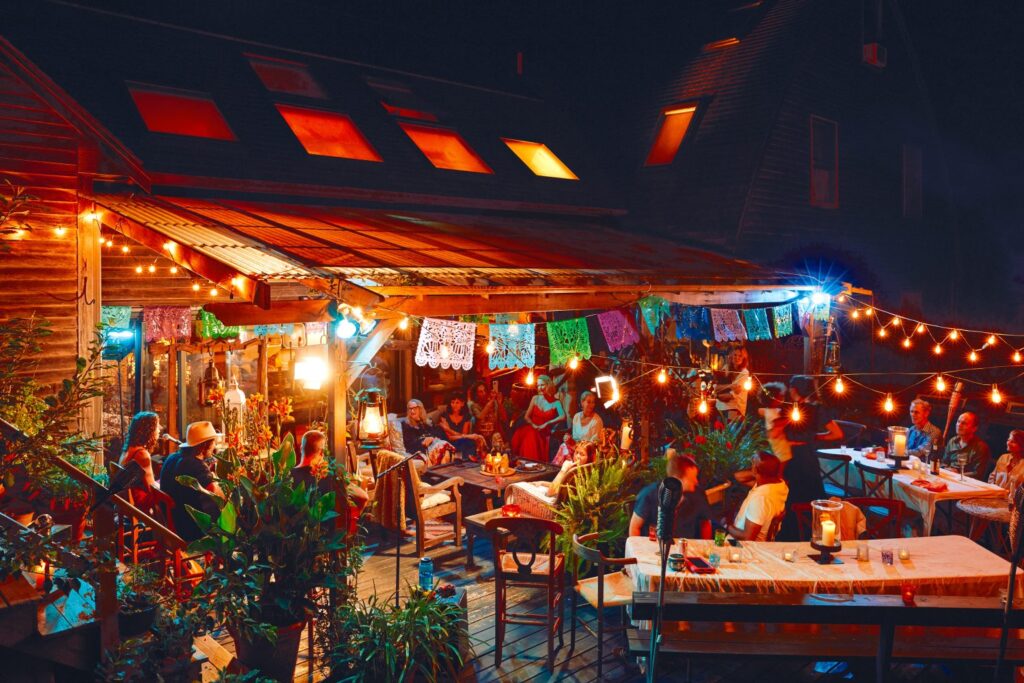
At gatherings and potluck dinners in Martha’s Vineyard, I noticed the diversity of both young and old. It truly reflects the essence of this way of life.
Tamara: There are a lot of people in the book just to continue that thought that creates a community where they are. For example, Julie Vanderhoop is a member of the Wampanoag Tribe in Aquinnah. She’s a baker and is a town select person, and she runs a restaurant. She does so many things, and she makes honey from her bees.
Orange Peel Bakery, also is now a community place where people go to see dance, share pizza toppings on pizza night, and sit at tables together. There are poetry readings, and she works hard to bring the community together in her outdoor little pizza place.
That started as a pizza place, now it’s a bakery and she built her oven. That’s just one example.
That’s great. This should also not only invite people to come to Martha’s Vineyard and learn about all these creative things, but it should almost be an example of what unity should look like because we’re in a loneliness epidemic. This is a very serious topic and so this is a great conversation to have.
We have talked about this a little bit, but will you tell us more about how you chose the people that you included in the book?
Tamara: We wanted to make sure that we were including painters, writers, and musicians, the first discussion was we needed everybody. We realized we couldn’t have the boat builders, we couldn’t get everybody in here.
Not everybody wants their world to be exposed and we have tremendous gratitude. To those who did say yes, to let us into their homes, their studios, their lives, their stories, and their sacred places where they like to find inspiration for their art. Originally it was like, “Okay, we know all of these people, let’s look at them and see if this works and makes an eclectic, diverse book.”
It was helpful to know a lot of the people because there was already some trust in friendship. Initially, it was, “Who do we know that we love and we want their work to be seen, and we love what they do?” That’s how it began, and then it was very organic.
We wanted to make sure the island was represented from Chappaquiddick to Aquinnah. Every town has creativity and artists in it. That was one thing that we made an effort to look at all the different towns, “Do we have someone from Oak Bluffs and West Tisbury?” Of course, we do, because there could be hundreds of people in every town on this little island.
Amanda, did you all get together and talk about all this?
Amanda: A lot. We spent a lot of time together. I love to talk about Tamara’s kitchen table where we just mapped out this book ourselves with the photos, we collaged them, chose, and printed everything out. Tamara was very inspired by the idea of putting these interstitial black-and-white photos of island landmarks in between the chapters as little beats or palate cleansers between each step.
Yes, we spent a lot of time. I was not on every shoot, but I was there and did a lot of time writing and editing together and as I said, mapping out the photos. Those are my best memories actually, from this whole process, sitting at Tamara’s table for afternoons and she was feeding me hard-boiled eggs.
Tamara: Luckily, we like to eat the same thing.
Amanda: That’s true. But again, because her house looks like Midnight Farm, it’s so comfortable. It’s in the tone of this book, that it felt like a real immersion and very creative mapping that out and fun.
“I hope people feel that they are getting an intimate view into a world that they may not have known anything about.”
Tamara: By the way, if Amanda couldn’t be here in the dead of winter doing a shoot, she would be on the phone. We would interview people together, pretty much almost everybody. If she wasn’t physically there, she was in the room.
Amanda: But the kitchen table to me is the metaphor for the whole project.
Tamara: I was gonna say, “Isn’t the kitchen table in every house?”
Yes, we need to get back to that. All right, so can each of you share one story or one chapter about an individual or a couple in the book? You do not have to pick your favorite one obviously, that would be too hard. But something that’s an interesting story that could give our listeners a peek inside this book.
Tamara: That’s easy. Because it could be anybody, but Amanda, do you want to go first?
Amanda: Tamara and I talked about this ahead of time just to make sure that we weren’t going to talk about this with the same person, not that there is one standout person. I thought I was going to talk about Kate Taylor because I feel like she encapsulates so much of the spirit of this book and of the creatives in this book.
She started as a singer and a songwriter, and then she started making jewelry. Now, she paints and so much of her art and her output is informed by her Vineyard life. She spent her whole life on this island, so I was going to talk about her.
But what I want to talk about is the section at the end of the book, which is the ‘tune-in, tune-out’ section. I feel that if this book is a love letter to the creative community, then the last section of this book where we filmed each subject in their favorite Island spot, is a love letter to the island itself.
Also for people who are maybe not interested in pottery or the output, the art that people are making, this is a great panorama of the island. These beautiful shots of people in their favorite settings, which are the woods and the beaches. That’s what I wanted to talk about because I think it’s really important and they’re really beautiful. The quotes that people used to describe why they chose these spots are so telling and sort of poetic themselves.
Incredibly poetic. Just for our listeners to know, Kate Taylor is James Taylor‘s sister, right?
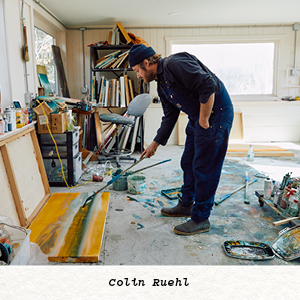
Tamara: Correct. I thought it would be interesting to talk about a couple whom I know and love, Colin Ruehl and Nettie Kent, and she happens to be our “Cover Girl” in the little shed of her rental house. If you look at the cover of the book, she’s a jeweler and her husband Colin is a painter, he refurbished an old shed on their rental property, so she could have a little jewelry studio.
But I chose to illustrate what this book is really about. Colin is a fifth-generation Menemsha-born and raised kid. Nettie, her father was a painter, Doug Kent, was a wonderful friend of mine. I’ve lots and lots of his paintings in my home here and many people on the Vineyard have collected his work for years.
She was born in a little shack, Nettie grew up with no electricity or running water in the woods of West Tisbury. Her mother still lives here, her sister lives here with her kids. Colin and Nettie met, fell in love, got married, and moved to Brooklyn to try to be a city family or to be a city couple. They lasted there a couple of years, she made jewelry, he painted, and he did some music. Then they have their first son. Rasmus is his name and is a completely loved child next to his little brother, Wild.
They realized they wanted to come back home, and they wanted to raise their children where they grew up. So they came back here a couple of years ago, not that long ago at all, and realized, how are they going to make it work? How can they get a house? They do what is called “The Vineyard Shuffle”. They move a couple of times a year from one house to another and it’s been getting increasingly difficult for them.
They now are in a year-round rental but could be sold at any moment. So they are unfortunately looking at land in the main and other places because they will not be able to stay on this island and buy a house. But in the meantime, unless some miracle happens, they have a gallery.
The reason that they could afford a gallery in Menemsha is it belonged to his grandfather, it’s a tiny little space that they completely redid. It’s called the Ruel Gallery in Menemsha and they are open all season with Nettie’s jewelry and Collin’s paintings. Colin documents that he chooses to do this, he paints the old way of life on the island.
He paints the older fishermen, the hunters, the people that he grew up with, the people that are now moving on in their 80s and 90s. He paints beautiful island vistas that are also vanishing before our eyes because of climate change and things aren’t always looking, in development, and houses going up that used to be in a giant field that artists before him painted.
Colin is chronicling and documenting for this generation and the next generation, what the up island looks like to him and it’s very rich with a lot of history. Her jewelry is inspired by her walks on the beach by the rocks, and together they make a community center feel at their gallery. They have openings, they host other artists, they get oysters, and he’s now making oyster knives by hand. I don’t know, Amanda, would you not agree that they kind of represent a lot of what this book is about?
Amanda: Their gallery is a delight. The office is charming, then the work inside, and there’s a sitting area outside where as Tamara says they’ve openings, music, oysters, and everyone or anyone who’s walking by can drop in.
That’s great, her jewelry looks so interesting. It also reminds me of Edward Hopper when he painted the scenes of New York without the skyscrapers that were there. Yes, the older way of life.
Growing up in Alabama, the only thing Martha’s Vineyard seems like is a world away. With Jaws, when we came there, I became obsessed with getting to Menemsha. But it was foggy, so we did not make it but we’ll have to come back.
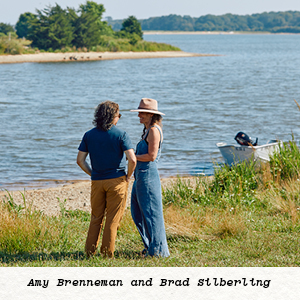
Tamara: You and Brad Silberling, another subject of ours in the book, married Amy Brenneman, and he’s now a very successful director. He lives in Los Angeles, they’re spending more and more time here. He too was obsessed with Jaws. His best work is done when he’s writing screenplays, editing, or anything.
He sits at the picnic table at the Menemsha Texaco station with all the clatter of summer and the noise, and he gets his best writing done there. You’ll see a picture of him in the ‘Tune-In, Tune-Out’ section that Amanda was talking about.
I love Amy Brenneman.
I understand that you two are donating a portion of the profits from the spoke to the Island Housing Trust. Will you tell us about why you chose this nonprofit and what it does?
Tamara: There are hundreds of wonderful organizations on this island. But because housing is at an all-time crisis right now – affordable housing, attainable housing, and housing security are rampant. We thought it would be lovely if we ever make any money on this book which we might, you never know, to donate to Island Housing Trust.
They are making huge strides in getting attainable year-round housing on the island so that we can preserve this community that we’re talking about. They just seem like a very worthy cause, and we want to support all of their efforts. Right now, every single town on Martha’s Vineyard is working on building affordable housing for low-income families.
They’re going to have to, they can’t survive without the people.
Amanda: They have built a hundred or so already. Their goal is to complete another 150. They’re in the middle of a drive to get that done in the next couple of years, as well. It is an ongoing project that’s had great success so far and is a natural fit with some of the themes in this book.
Thank goodness, they’ve already started on it. That’s great, that’s wonderful. Then your book is incredibly gorgeous and well written. I feel like when you see this book, I’m going to be able to picture what Tamara’s house looks exactly like on that kitchen table. It’s truly a work of art in itself.
I want to thank you both for bringing this book into the world for all of us. I wanted to ask if you have any final thoughts about your process of writing this book, your hopes for the future of the art community, and this very special place.
Tamara: First of all, thank you both so much for your enthusiasm. It’s really lovely, and it’s lovely to meet both of you. We’re very honored to be here. I hope that there will be artists in the future that remain on Martha’s Vineyard. This place will always be a creative hub.
It’s our responsibility, collectively, as a community to ensure that future generations of artists will be able to live here. Documenting what we have done now is just one small way of saying, “We love you, Martha’s Vineyard.” I want to thank Amanda for igniting the passion that I have for this island through Vineyard Folk.

I hope that there will be artists in the future that remain on Martha’s Vineyard. This place will always be a creative hub.
Amanda: For me, again, this is only now my fifth summer up here. Tamara’s telling me I have to stop using that line because I’m new here. But certainly last summer, going to all these spaces, and places, and meeting all these people, interviewing, and researching. I got such an education on the island that deepened my understanding.
I hope that by the same token, that’s a gift that we can give to all readers that deepens their understanding – the history, the ties that connect people of this place. So when they’re driving by a flower stand, and they think, “Oh wait, that’s Krishna’s flower stand, she’s leasing that land for $1 from the town of Chilmark.” Have that depth of understanding and also not take anything for granted.
I do feel like there needs to be like, not a tour with a tour bus. But the people could come, look at the book, and maybe pick out three or four creatives that resonate with them. That they would focus their trip around.
Amanda: They can. I just met a publisher who was talking about who I met at a publishing event and she bought the book. Turns out, she came up here and she just wrote to me and said, “Are there any of these artists that I can go visit with friends?” I say, “Yes, most of them actually, you can.”
That’s fabulous. You’re giving back to the artists too. We’re just thrilled to have you two on the podcast. We’re so excited to introduce this spectacular, magical book that you two have put out into the world. Hopefully one day, we’ll all get to come to Martha’s Vineyard, learn more about all these artists, and see what you two come up with next.
Tamara: Thank you so much. Welcome to everybody in the world of Vineyard Folk. It is some kind of magical. But if you come here, you’ll see that it’s real.
How much fun would that be though?
Tamara: It is pretty great until a tree falls on your house.
We had that in Alabama, tornadoes. All right, thanks again.
Amanda: Thank you, Delia and Alison. Have a beautiful rest of your day.
You too.
If you’ve enjoyed this episode, we’d love for you to spread the joy—share it with a friend and hit that subscribe button. Your involvement helps us grow, and we’d be thrilled to have you along for the journey.
EXCLUSIVE CONTENT AWAITS YOU!
Have you heard about our weekly newsletter? It’s your ticket to exclusive content that doesn’t make its way to other platforms. We’re talking behind-the-scenes insights, bonus stories, and much more that’s just for you.
Imagine getting a delightful newsletter drop every Tuesday, except for one special edition on the third Thursday of every month—it’s Alison’s Celebrating Life After 40 edition, a must-read!
Important Links
Connect with Vineyard Folk’s Authors
Tamara Weiss and Amanda Benchley’s Books
- Vineyard Folk: Creative People and Places of Martha’s Vineyard
- Potluck at Midnight Farm: Celebrating Food, Family, and Friends on Martha’s Vineyard
- Our Shoes, Our Selves: 40 Women, 40 Stories, 40 Pairs of Shoes
- Artists Living with Art
Other Books Mentioned
Movies Produced by Tamara Weiss
Support Martha’s Vineyard Community
- Vineyard Gazette Media Group
- Ruel Gallery
- Nettie Kent Jewelry
- Carol Taylor’s Gallery
- Orange Peel Bakery
- Island Housing Trust
People
- Rose Styron
- James Lapine
- Carly Simon
- Bridget Moynahan
- Katie Couric
- Susan Collins
- Clarkson Potter
- Tony Shalhoub
- Bob Marley
- Skip Marley
- Cedella Marley
- Elizabeth Cecil
- Allen Whiting
- Carol Taylor
- Julie Vanderhoop
- Kate Taylor
- James Taylor
- Colin Ruel
- Nettie Kent
- Doug Kent
- Edward Hopper
- Brad Silberling
- Amy Brenneman
Media
About the Guests
Tamara Weiss lives on Martha’s Vineyard. She is a film producer and interior designer and the author of the Potluck at Midnight Farm cookbook, named after the home store she owned with Carly Simon, her partner. Besides her documentary film, Born into the Gig, she has several film and television projects under development. All of her projects derive from her creative life on Martha’s Vineyard and the artistic community who live there.
Amanda Benchley is a filmmaker and journalist and the co-author of four books: Artists Living with Art (Abrams, 2015), a look at the private art collections of some of today’s leading artists; Our Shoes, Our Selves (Abrams, 2019), profiles of 40 inspiring and significant female leaders and achievers; and Open Studio (Phaidon, 2020), a behind-the-scenes look at contemporary artists at work and VINEYARD FOLK: Creative People and Places of Martha’s Vineyard. Her videos have been shown at The Smithsonian Institute, The Chicago History Museum, and The New York Historical Society. She has also written for The New York Times, The Wall Street Journal, The New York Observer, Galerie, and Introspective Magazines.
The Style That Binds Us
BY
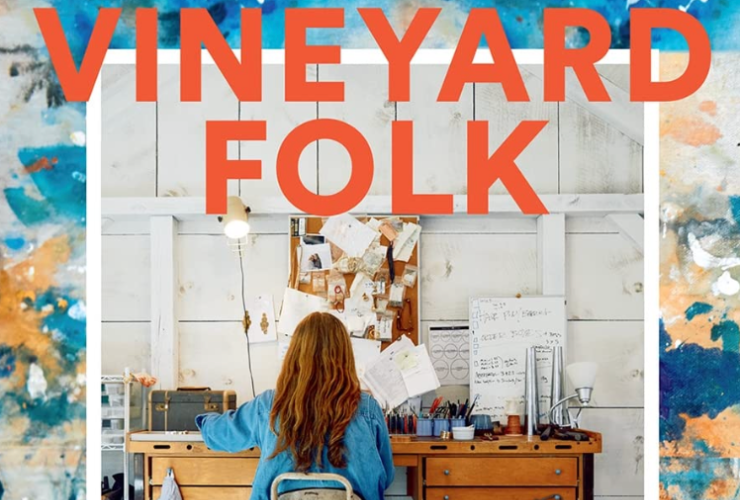


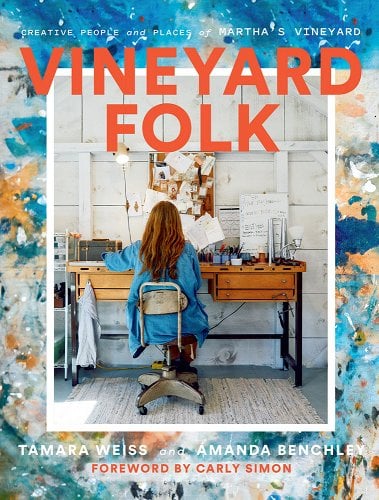

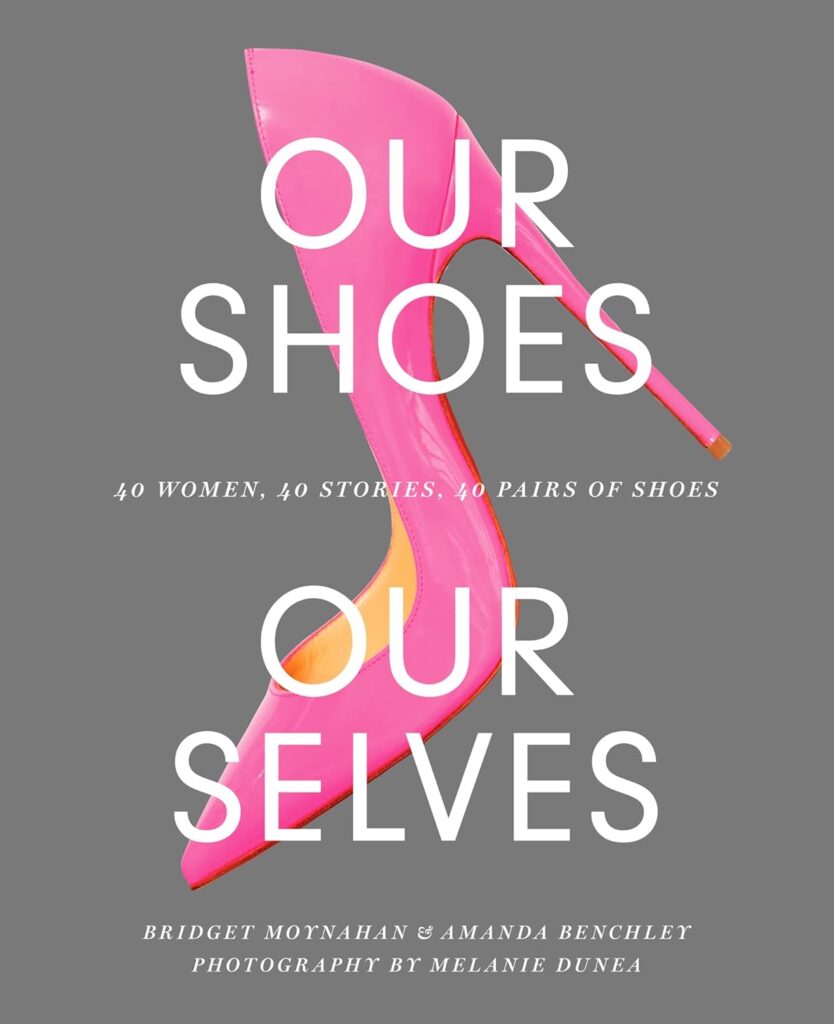
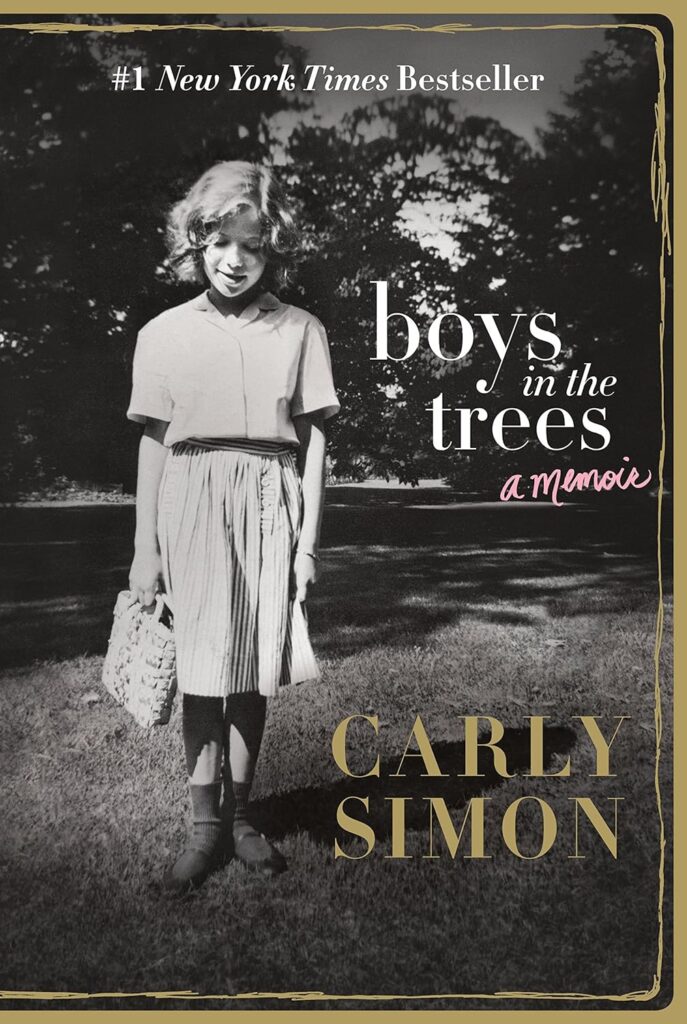
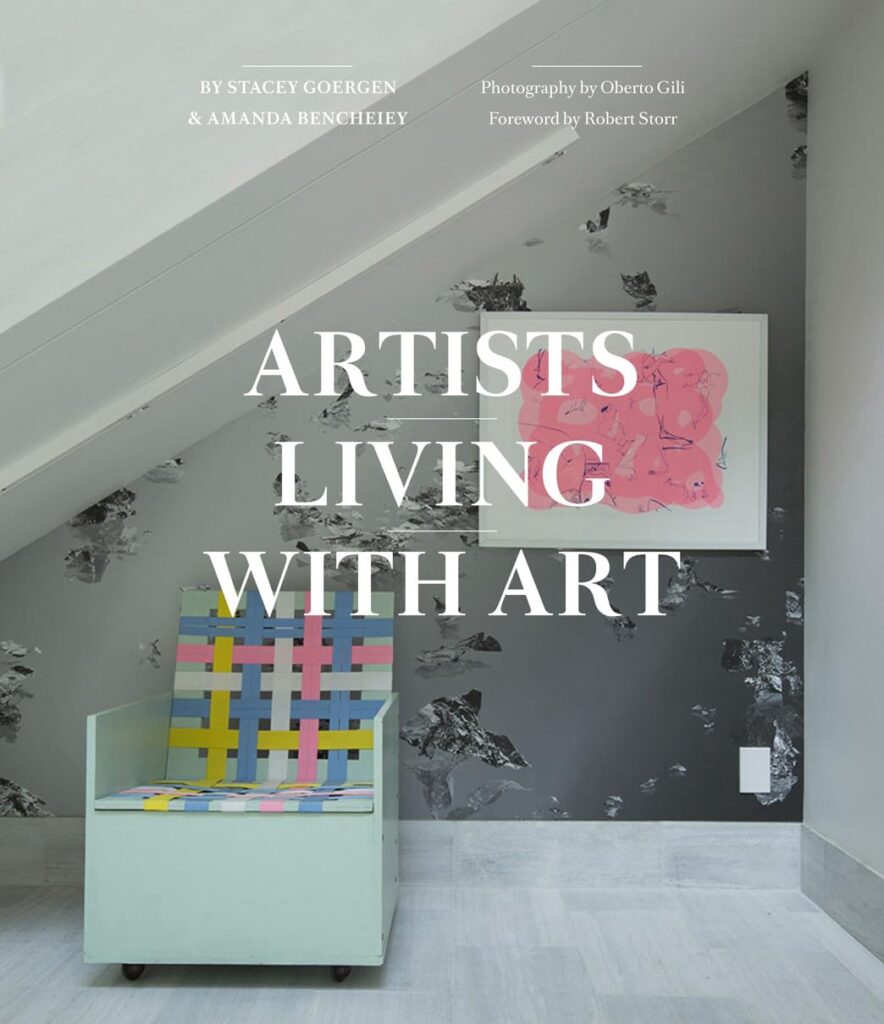
you said: